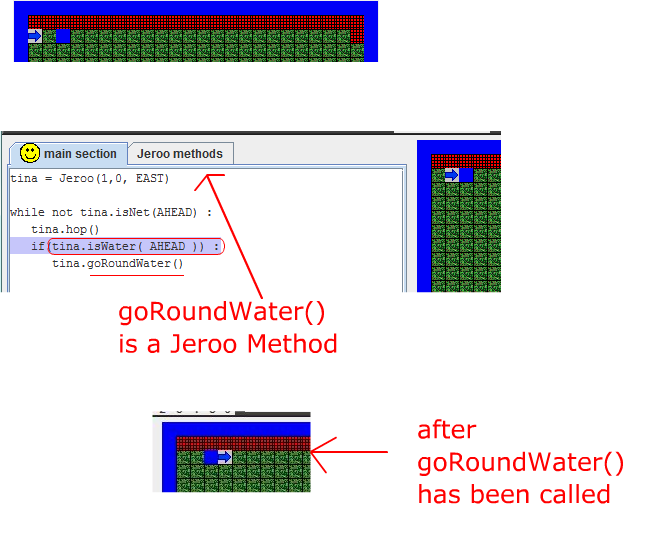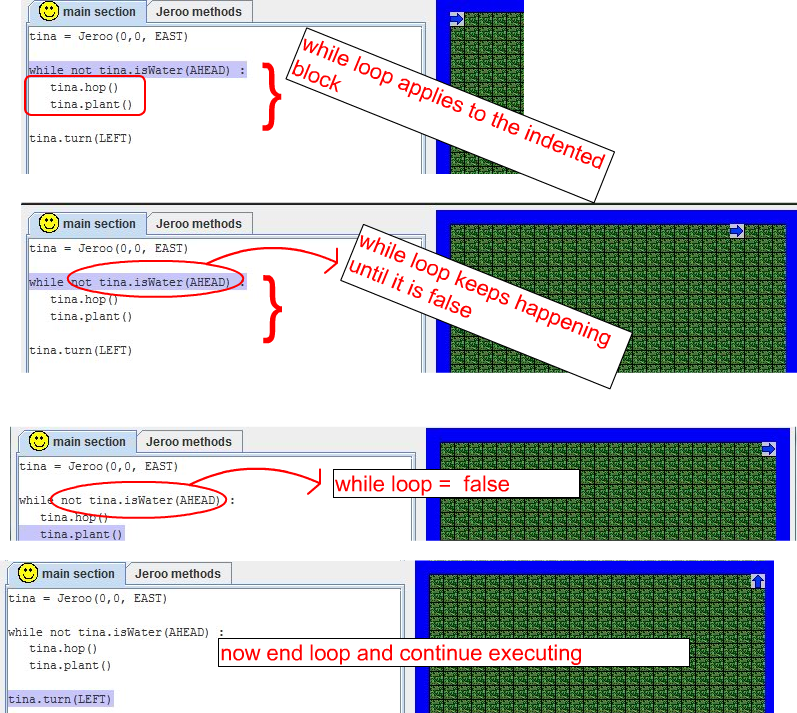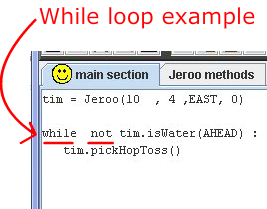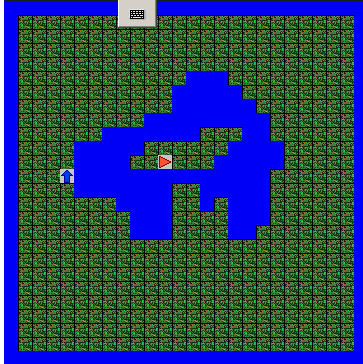Let’s write a program that solves the map below (which you should create yourself) using only 1 while loop
 |
 |
What is an “If Test”?
If you just want to do a single test, use an ‘if’ test, instead of a while loop
…Now we can continue hopping till we get to the end of the map
Your Assignment: Create the map above and complete the program . All that you have to do use is the code at the top and then write the custom method goRoundWater()














